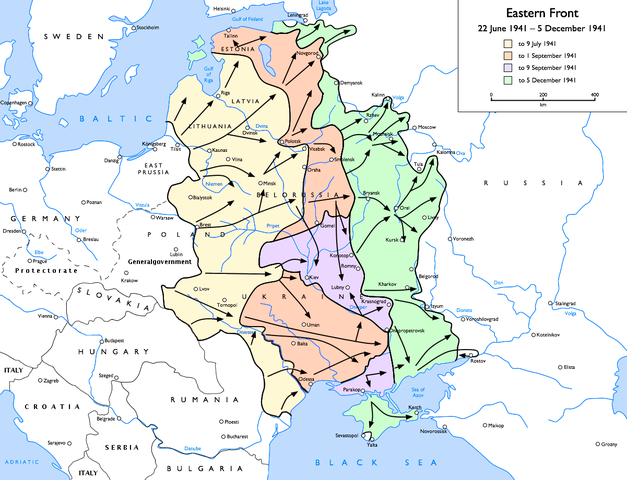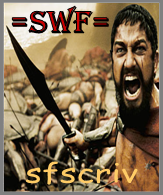Post by sfscriv on Mar 17, 2013 12:44:37 GMT 1

In the late 1930s, many competent and experienced military officers were killed in the Great Purge, leaving the Red Army weakened.
The Soviet Union and Germany signed a non-aggression pact shortly before the German and Russian invasion of Poland that triggered the Second World War in 1939. The pact outlined an agreement between the Third Reich and the Soviet Union on the division of the border states between their respective "spheres of influence". The Soviet Union and Germany would split Poland and Latvia, Estonia and Finland were defined as falling within the Soviet sphere of influence. The countries entered a trade pact in 1940, in which the Soviets received German military and industrial equipment in exchange for raw materials, such as oil or wheat, to help Germany circumvent a British blockade.
Hitler told one of his generals in June that the victories in western Europe "finally freed his hands for his important real task: the showdown with Bolshevism".

After Germany entered the Axis Pact with Japan and Italy, Germany began negotiations the Soviet entry into the Axis. After two days of negotiations in Berlin from 12–14 November and a Soviet Union counterproposal agreement on 25 November 1940, the Germans did not respond.
German military planners also researched Napoleon's failed invasion of Russia. In their calculations they concluded that there was little danger of a large-scale retreat of the Soviet army into the Russian interior, as it could not afford to give up the Baltic states, Ukraine, or the Moscow and Leningrad regions, all of which were vital to the Red Army for supply reasons and would thus have to be defended.
Hitler had grown overconfident from his rapid success in Western Europe and the Red Army's ineptitude in the Winter War against Finland in 1939–1940. He expected victory within a few months and therefore did not prepare for a war lasting into the winter.
The Germans had begun massing troops near the Soviet border even before the campaign in the Balkans had finished. By the third week in February 1941, 680,000 German troops were stationed on the Romanian-Soviet border.
Operation Barbarossa was to combine a northern assault towards Leningrad, a symbolic capturing of Moscow, and an economic strategy of seizing oil fields in the south beyond Ukraine.
Army Group North was to march through the Baltics into northern Russia, and either take or destroy the city of Leningrad (now Saint Petersburg). Army Group Center would advance to Smolensk and then Moscow, marching through what is now Belarus and the west-central regions of Russia proper. Army Group South was to strike the heavily populated and agricultural heartland of Ukraine, taking Kiev before continuing eastward over the steppes of the southern USSR to the Volga with the aim of controlling the oil-rich Caucasus.
Operation Barbarossa was the code name for Germany's invasion of the Soviet Union during the Second World War. Beginning on 22 June 1941, over 4 million soldiers of the Axis powers invaded the USSR along a 2,900 km (1,800 mi) front; the largest invasion in the history of warfare. In addition to troops, Barbarossa used 600,000 motor vehicles and 750,000 horses.
Initially, the Germans won resounding victories and occupied some of the most important economic areas of the Soviet Union, mainly in Ukraine. The German forces captured 3 million Soviet POWs. Its failure was a turning point in the Third Reich's fortunes.
The Germans held up to 500,000 sq mi (1,300,000 km2) of territory with over 75 million people at the end of 1941, and went on to seize another 250,000 sq mi (650,000 km2) before being forced to retreat after defeats at Stalingrad and Kursk.







